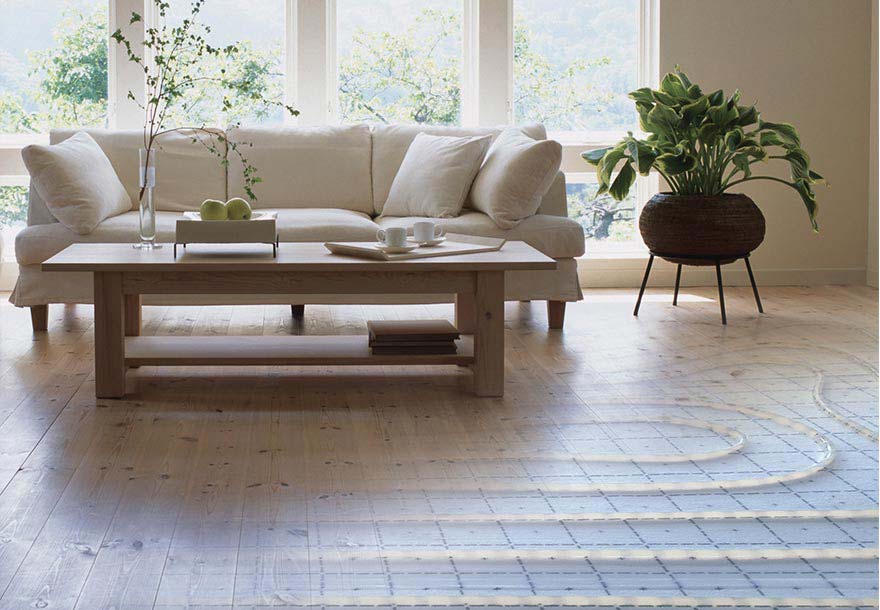Thanks to the many benefits it offers, hydronic underfloor heating has fast increased in popularity across Australian homes and businesses. If you’re anything like us, we’re sure that you have a lot of questions about this incredible technology, how it works and how it can be incorporated into your home to provide you with luxurious warmth all winter long. Check out our explanation and other frequently asked questions below!

Many people are surprised to learn that hydronic heating is not a new thing at all. In fact, there are many examples in history of hot water being used for heating. It’s earliest recorded use dates way back to the 14th century where a Greenland monastery used hot spring water to heat its buildings. The technology has come a long way since then.
One of the most efficient and versatile options available, hydronic heating circulates heated water through pipes laid underneath the floor to underfloor coils, trench convectors, panel radiators or even heated towel rails. It’s known as a wholly comfortable method because it heats the objects in the room rather than the air itself, resulting in even heat distribution.
Heat is transferred into the room via thermal radiation (in the form of electromagnetic radiation waves). Heat emitters (such as panel radiators or underfloor coils), emit this radiant heat in order to warm up the room. As radiant heat is absorbed by objects, it can’t be blown away or moved – resulting in a truly comfortable space.
The entire system is powered by either a boiler or a heat pump. Boilers heat water similarly to your hot water service; it’s then piped around your home in a closed loop system. Heat pumps use heat from the air to warm the water before sending it around the system. There is a variety of boilers and pumps on the market, so you’ll need to ensure that you’ve chosen one to suit your house.
Compared to other available systems, hydronic underfloor heating offers a wide range of benefits (some of which we discuss further in this blog). It’s healthier (no fans to blow pollutants around), safer (zero fire risk), lower running costs, better for the environment (lowest greenhouse emissions of all heating options), and quieter (no motor so you won’t hear a thing).
Providing you service your hydronic heating system according to the manufacturer’s guidelines, you can rest assured that it’s one of the safest climate control options for your home. The water is heated to well below boiling point so surface areas (like panel radiators and towel rails) cannot scald or burn. The lack of electrical connections also helps to reduce safety concerns.
In short – yes! One of the biggest health benefits offered by hydronic heating is that it doesn’t utilise fans, vents or ducts – which means that dust mites, pollen, pet and human dander, fungal spores and other airborne pollutants are prevented from being spread. Plus, all of these pollutants are known to spur mould growth, which is a major asthma trigger.
Most homeowners find that hydronic heating systems are up to 35% more cost effective to run than their ducted counterparts. Whilst the initial investment is likely to be higher, the ongoing running costs are lower. Your cost savings will, however, depend on the size of your home, what products you want to install, what kind of flooring you have, and whether it’s a new build or not.
In short – no! You might be pretty handy on the tools or want to minimise costs wherever possible, but it’s highly advisable that you don’tattempt to install a hydronic radiant heating system unless you’re a trained professional. This will ensure that you’re protecting your investment, as well as ensure that you’ll get the absolute best performance from the system.
Cambro Hydronic Heating has been providing Australian homes and businesses with climate control options that are stylish, safe and comfortable for more than 50 years. We are an industry leader here in Australia, only using the very best technology and innovation direct from Europe to ensure our customers are provided with luxurious warmth all winter long. If you need some help choosing a system for your home, be sure to contact our helpful team.